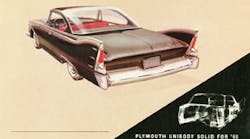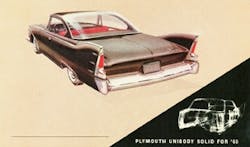For me, nothing can be more confusing than technology. That’s partly because the term "technology" can mean different things to different people at different times. Technology can generally be defined as the techniques, skills, methods, and processes used in the production of goods and services. The control of fire to perform a task is one of the earliest and best examples of the application of technology. Other examples include the invention of the wheel and the particle accelerator. Not surprisingly, the popular conception of "technology" has changed throughout the years thanks to the discovery, invention, and use of new technologies. I think that the most succinct definition of technology comes from Bernard Stiegler, a French philosopher, who described it as "organized inorganic matter."
The biggest challenge for me regarding new technologies deciding is when to jump on the train and when to wait for the next one. I have a friend who lines up whenever his favorite mobile device brand has an update. And I don’t understand it. I like my mobile device, and I use it for variety of things – phone calls, emails, texts, news, and occasionally, photos. It would be hard to function without it, but as long it is performing at a reasonable speed, I don’t feel compelled to upgrade.
But what about the world of DC operations and logistics? If you invest and adopt early, you can potentially save hundreds of thousands of dollars. But if a better solution is around the corner, those funds would be better withheld and spent later. Today, it seems that technology in this area of the business is emerging faster than ever before.
When weighing the advantages of the newest and greatest innovation, I am often reminded of my late father. My dad LOVED cars. If you were to say that someone had the "car bug" then you could say that my dad had the "Spanish flu" version of it. An engineer by trade, he was never without a project car to tinker with or restore. The problem was funding this pursuit. My mother, ever watchful of the family budget, didn’t see the value in fender skirts. She would rather see new kitchen curtains. This resulted in a constant but civilized push-pull. My dad was also an early adopter of any technology that could potentially divert income into the car budget. He prized efficiency as much as he did cars. These two collided during the 1973 oil crisis, and I can remember it like it was yesterday.
By the mid-1960s, oil production and the availability of gasoline in developed countries began to tighten. In 1973, whether gas supplies truly were low or the problem was imagined, prices skyrocketed. Businesses and families alike began to feel the pinch, and our household was no exception. Something had to give. In response to consumer demands, the automotive industry began the process of retooling to create more fuel-efficient vehicles. However, Europe and parts of Asia were already there.
So one spring day, suddenly and without warning, Dad rolled into the driveway in something that resembled a cross between a car and a toy. I was shocked and heartbroken to learn that Mr. Belvedere had been traded for something called a Toyota Corona. Built in 1969, this jet black car was minuscule by every standard. The wheels were small, the roof was low, and even the steering wheel looked too small to comfortably hang onto. In total, the car resembled a slightly advanced bumper car like those that I would see at our annual county fair. And worst of all, I would be packed in the backseat with my siblings like young, irritable, sweaty sardines.
For days, Dad chirped on and on about the virtues of a car that would sip, not slurp, gasoline. “What about the fins?” I asked. “Old technology, son – this is the way of the future! And think how much we’ll save!” And so it went. Dad gleefully showed off his latest car, proud of being a first adopter of the latest technology. But a year or so later, somewhere between here and there, the car suddenly came to a stop, gasped, shuttered, and died. A tow-truck ride and subsequent inspection later, it was revealed that the timing chain had broken and another one had to be ordered. The problem became availability. The supply chain had not yet matured for foreign vehicle parts, and the beloved Corona sat marooned in our driveway for 12 weeks!
The inefficiency of the experience caused my dad to regroup and try another strategy. While he would still be an early adopter of fuel-efficient cars, he would need to drive something that had been manufactured closer to home. By then, the U.S. car manufacturers were competing in this market, and the Corona was replaced with a 1976 Chevy Chevette (powder blue). He drove this car for years, racking up about 100,000 miles before trading it for a newer car.
I always admired my dad for his enthusiasm for trying something new. Though his motives were more financially motivated, he taught me to be creative and to keep an open mind.
When it comes to weighing the latest technological advancement for relevance in your operations, I have little advice and no pearls of wisdom. I always consider first and foremost the opinions of those who report to me. They have been empowered to help guide this process, and I view them as our internal experts. The formula that we use is to add all of the data that we can find and then divide by common sense. I always ask a lot of questions, and of course, we look for a reasonable ROI.
But while I don’t have much advice about analyzing opportunities, I do believe that you need a process for making sure that you are aware of all emerging technologies that could potentially provide a benefit. Online content, trade shows, publications, and associations are great ways to stay connected. And don’t be afraid to try something if the exposure to failure is relatively low or marginal. After all, a Corona in the short term will help you understand the benefits of a Chevette later.

